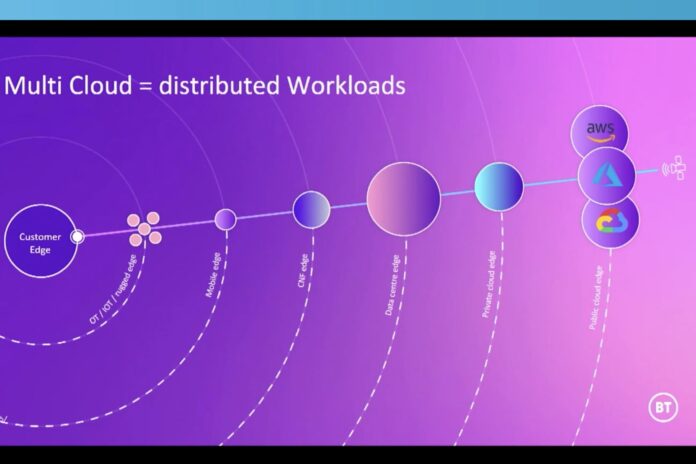Colin Bannon, CTO at BT Business, provided insight into BT’s approach and progress at Mobile Europe’s Network Now conference
Colin Bannon, CTO at BT Business, set the scene in his presentation, talking about the “great replatforming” of the move to cloud that began about a decade ago.
He gave us insight into the operator’s progress in Network-as-a-Service (NaaS), how it’s working out and what’s next. He described the “great replatforming” that has taken place over the last decade as enterprises moved their applications to the cloud. In part due to lack of skills and experience, this often leads to security issues, fragmented operations and data sovereignty issues.
He added that the biggest challenge remains “the toxic tail” and “the enormous inertia of the legacy code” and the fact that there is not always a viable business case to deal with it. His presentation set out BT’s approach and progress.
Distributed app, different procurement
Hence exploded those monolithic apps – located perhaps in databases in the backend and elsewhere, middleware and a modern front end – have idiosyncratic flows between them. From an assurance point of view, breaking the link between the app and its physical underpinning to create a non-deterministic network creates complications.
This includes customers being able to make more nuanced decisions and to calculate total cost of ownership, as their procurement processes tend to still be based on the stove pipe model. This means a 10% saving in one area just move the “pain bubble” around the organisation to another, costing most effort, time and resources, including money.
This means operator’s selling NaaS’ optimised connectivity and deterministic network need to be through discussions with the CTO or CTIO within enterprises.
For much, much more about NaaS, watch the video here.
NaaS is revolutionary because it is a “fundamental replumbing and architecture” and a once-in-a-generation capital investment, including dealing with some “design traits” in cloud and the internet.
The new, once-in-a-generation investment in the network has meant BT has been able to build from the ground up and gain x10 performance improvement while using 76% less electricity.
The API-first design has allowed it to use the same APIs internally and for exposure to customers.
The multiservice edge means customers can switch between MPLS or Ethernet or the internet or whatever else they want without a protracted process of ceasing one and starting up another service.
This is done by abstracting the port from the protocol. The software defined underlay means simply changing the protocol on-demand.
Another feature of the new infrastructure is there are no single points of failure anywhere so if something fails within a country, the fallback is within that country rather than rerouting to another country and tunnelling back, say. This keeps the resilience round trip down to 3-5ms rather than 250ms.
Bannon also explained how BT has embedded business intent and much, much more.
More information about our events upcoming and present is here.



